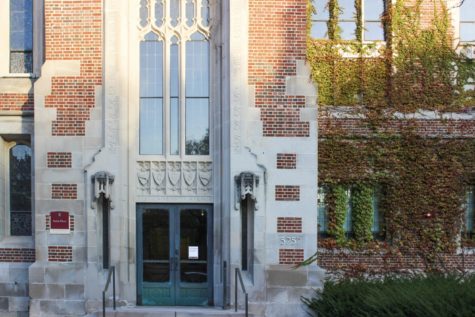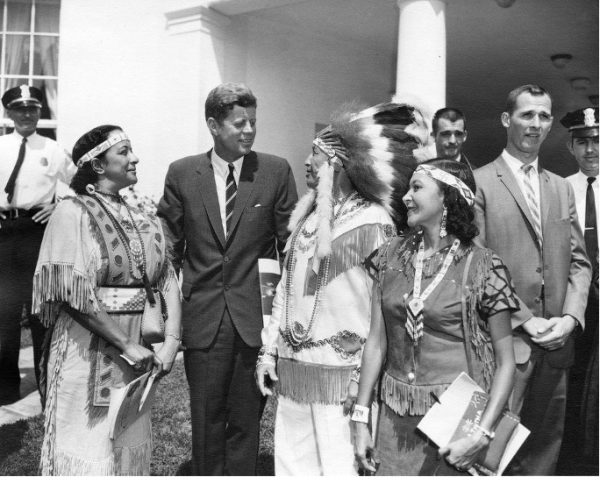The Wild Goose Chase to Chase Out the Canada Geese
Canada geese are often found on the Midway, yet the birds aren’t as silly as they seem, posing a liability to airplanes, disturbing humans, and leaving large amounts of excrement.
A troika of Canada geese
April 25, 2023
On the Midway and in Jackson Park, it’s hard not to come across a flock of Canada geese, with their sharp, hissing beaks and black, white, and gray feathers. The birds are unfazed by humans, but don’t get too close—they can be harshly territorial.
Now, they have more of a presence than ever, ruling over Chicago’s parks with their loud honks and hisses. In recent years, observations from scientists suggest that these migratory geese are wintering farther north than they have historically, contributing to an increase in the overall Canada goose population in the Chicago area and impacting the human Chicagoans as well. The wild goose chase to understand the city’s geese pulls in all sorts of people, from scientists and academics to facilities managers and professional goose chasers to even student journalists.
Michael Patrick Ward, a professor of natural resources and environmental sciences at the University of Illinois Chicago, began studying Chicago’s geese after Midway International Airport encountered the problem of too many geese staying in the winter. Ward is a well-cited academic authority on geese, although he does do research on other birds, too (in our interview, he also told me about his work for the Cuban and Mexican governments). His goose research focuses on understanding the birds’ behavior and why their habits have changed.
“There are some birds that leave Chicago in the winter, but the [number] of birds in Chicago has greatly increased to the point where there’s lots of concerns about air traffic and running into geese,” Ward says. Geese are capable of flying in the way of planes, which can cause damage and even be deadly to plane passengers. Ward’s team reported that geese were responsible for 1,403 recorded bird strikes to civil aircraft from 1990 to 2012. One such incident in 2009, in which a flock of Canada geese forced down US Airways Flight 1549 onto the Hudson River, was even dramatized in the 2016 film Sully.
The Past and Present of Canada Geese
Although they’re now a fixture in grassy areas across the country, the Canada geese we see today wouldn’t be there without successful population restoration efforts. In the early 20th century, hunting, egg-collecting, and habitat destruction nearly drove the giant Canada goose, one of the most common subspecies in the Midwest, out of North America. In the 1960s, a small flock was discovered in the Midwest, and a program was launched to bring them back. Their population was brought back from the brink, possibly too successfully: Since the restoration project began, their numbers have gone from a few thousand to millions.
Some Canada geese migrate, while other “resident” geese stay put year-round. Previously, Chicago’s migratory Canada geese would fly from the Upper Midwest to spend the winter in warmer areas such as southern Illinois, Tennessee, and Arkansas. However, over the past decade, more and more have been choosing to stay in Chicago year-round, joining the existing population of resident geese.
Ward tells me that geese have been staying in the city for safety reasons, choosing to make the trade-off between colder weather and increased risk of hunting.
“They learn very quickly where… they’re going to get shot at, so they’ll hang out, even though they’re freezing,” Ward says. “It’s very cold to hang out in Southside Chicago or along Lake Shore Drive in the winter, but it might be better to do that than to migrate down to central Illinois and potentially get shot by hunters.”
To gather his data, Ward and his team track the geese, putting collars with transmitters on the birds that record their location and how much energy they are using. However, the wily geese have caught on to the researchers’ tricks. “All birds learn. They learn both from their own experiences and they learn from others,” Ward says.
“To catch them, I have grad students that would go up there and use a little hand net to catch them. But they were able to identify our car and our grad students,” he says. “So our grad students would have to dress up as a jogger and act like they’re jogging by and they don’t care about the goose, and then, from their sweatshirt, they pull out the net and catch them.”
Just like the grad students, geese are fast learners, and Ward maintains that they (the geese) understand their environment unexpectedly well: “They’re quite a bit smarter than you might think.”
Trevor Price, a professor in UChicago’s Department of Ecology and Evolution, concurs with Ward and emphasizes that geese choose to err on the side of caution and go where there is less perceived predation. Although geese aren’t his particular area of expertise—he mainly focuses on Himalayan biodiversity, the evolution of color vision in birds, and speciation processes—Price came to our interview prepared with papers that he had read on the topic.
Price suggests that the migrant geese may be following the lead of Chicago’s resident geese. “My best guess is that the resident population has encouraged migrant birds to just stick around,” Price says. “We have a huge resident population that’s breeding throughout the year, right? They’re the main contributors to this. So some of the migrant birds seem to stop in Chicago now. My best guess is that that’s because they can see all the residents there and think, ‘Well, why should I bother flying further south?’”
A Thriving Population
Here in the city, geese gravitate toward large, grassy areas, ideal for grazing and spotting predators from a distance. This makes man-made areas like golf courses, parks, and sports fields perfect for them. In some cases, geese have even begun to breed in places such as parking lots and roofs, according to Ward.
These birds are everywhere, and humans are contributing by creating ideal homes for them. “They’re primarily eating grass, and we do a lot to promote grass. We’re fertilizing our grass in Chicago. We mow it, so it’s constantly growing. That’s what they like. We’re essentially providing the perfect habitat for them to continue to sit around and eat all day,” Ward says.
Price points out that the geese are especially well suited to adapt and thrive in urban environments, which “are famous for having very few common species.” Humans, Price reiterates, have created “novel environments where only a few species can exploit it, but that means all the other species they compete with are not there, so they become very abundant”—in sum, the perfect elements for drastic goose population growth.
More birds in the city also means more chances for clashes between geese and humans, a major concern covered by Ward’s research. Geese aren’t friendly neighbors and can become aggressive when sharing space with humans. Their excrement also poses a health risk, and their flocks can disrupt human activity.
At UChicago, geese are “a steady, year-round issue for sports fields on campus,” Brian Dodge, the University’s assistant director of facilities and event operations, tells me. The geese leave behind tracks and excrement, which must be cleaned up or else stepped in by oblivious Maroons.
The rising goose population also affects Midway International Airport. The Chicago Department of Aviation, in partnership with USDA Animal and Plant Health Inspection Service (APHIS) Wildlife Services, relies on wildlife hazard management at O’Hare and Midway to monitor wildlife activity around their respective airports.
Strategic Management
Geese can be inconvenient and messy, so humans have had to find different strategies to manage these feathered neighbors. Goose management is one of the goals of Ward’s research.
“We’re trying to figure out what is the most effective way to try to reduce human-wildlife conflict,” Ward says. “Some people love geese, some people hate geese, but they do cause problems in certain places. And if we can understand their behavior, then we might be able to figure out a way to change their behavior.”
The ways that geese are managed vary in extremity. Harassment, which is one of the most common methods, involves chasing geese or scaring them away. This can be done with lasers, loud noises, and dogs, for example. It is a popular way to get geese to leave the area, but Ward says that it is a temporary fix and can’t scare them out of a whole neighborhood or region.
“It’s really hard to harass them to the point that they leave the whole city,” he says. “The only way we think you can do that is if it’s super cold out. If you start making them use more energy than they can lose without dying, then they might migrate from the area. But it’s kind of a Band-Aid. You’re just moving them from your backyard to someone else’s backyard, and you’re not really changing their greater behavior in the area.”
One man who doesn’t share this opinion is Bob Young, who has made a career out of goose harassment. For the past 25 years, he has run Geese Chasers alongside his wife. The company was originally founded in Mount Laurel, New Jersey, and has since expanded to other states and locations, including a new franchise in Chicago. Within half an hour of my emailing him, Young called me, catching me unprepared, like one of the geese that his company chases.
“Geese can really destroy landscapes,” Young says while walking me through the method that he has created. Wherever they go, they leave their “calling card,” which can be a pound to a pound and a half of droppings. Young’s solution is border collies, which he trains to chase and herd geese away from places like golf courses, parking lots, and walkways, among other locations.
Young proudly told me about an upcoming New York Times feature on him, which has since been published. His website includes photos of border collies with lolling tongues and wagging tails, cars painted with the company logo on the side, and even images of the “Geese Chopper,” a custom motorcycle which tours through the country and raises money for charities.
At the end of our call, as I thanked him for speaking with me, Young offered to send “goose swag” to me in the mail. I initially thought I had misheard. “College students love it,” he assures me. A few weeks later, I picked up a package from my dorm building’s mailroom labeled with a return address located in New Jersey. Inside, there were two T-shirts reading “It’s a Goose Thing” on the front and “Yeah, We Chase Geese” on the back, along with a bottle opener and a Frisbee. The parcel also contained a booklet with instructions on how to open my own Geese Chasers franchise.
The jury is still out on how much college students love becoming goose-chasing franchisees, but business grows every year—along with the goose population. Young insists that his solution is more humane than the alternatives like egg oiling, which prevents the development of eggs by effectively asphyxiating the embryo. In extreme situations, when communities’ goose problems become unmanageable, they can appeal for a goose culling permit from the USDA to carry out a “charity harvest,” where USDA officials round up geese, kill them, and donate the meat to food banks. Although this suggestion can make some people uneasy, Price told me that he thinks it could work.
“Every animal has to die. And there’s so much worry about culling things, but I’m totally in favor of it. What I would do is, if people really want to get rid of the geese, have some way to humanely trap or kill them,” says Price.
Although the goose population won’t continue increasing forever, Ward says there’s still room to grow at the moment. Geese, despite Chicagoans’ best efforts, “are here to stay.”












Josh Brook / May 25, 2023 at 2:51 pm
The writer clearly does not know how to write a nuanced piece.
How much of a nuisance are humans to these animals? The worst they do to us is roam around and poop on our sports fields. The worst we do to them is kill them with the poor excuse that ‘every animal has to die.’
Humans are not the only animals on earth. We have to learn how to live harmoniously with the other species on this planet instead of assuming we are the sole focal point of the world.
Paul Olinger / Apr 25, 2023 at 11:57 pm
Disgusting one-sided hit piece. Instead of learning to live with geese, the “solutions” here all involve killing them or running them off.
Humans have displaced enough wildlife to the point that many bird populations are threatened now. If humans are unwilling to learn to live with Canada geese, then what hope do other animals that are less capable of adapting have?